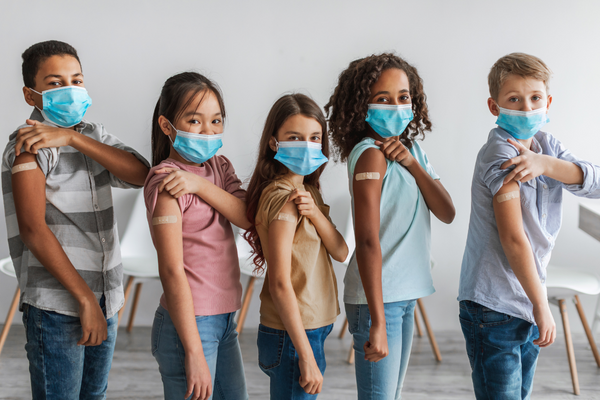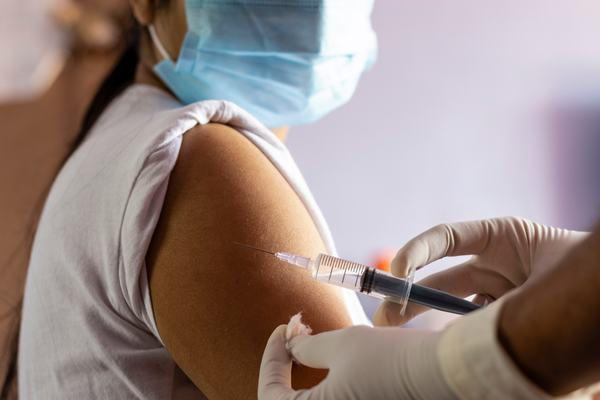What You Need To Know About Vaccine Storage and Cold Chain?

Aman P.
Dec 30, 2022
Did you know that the right cold chain is critical for the long-term stability of freeze-dried vaccines? These are only some of the facts we explore in our article on how to ensure your vaccine supply is resilient.

Blog Outline –
- What is the vaccine cold chain?
- Most vaccines need to be kept cold but not frozen!
- What does the cold chain have to do with COVID-19?
- What are some challenging aspects of Cold Chain and Ultra-Cold Chain Vaccines?
What is the vaccine cold chain?
The vaccine cold chain is a system of temperature monitoring and record keeping that ensures vaccines remain safe and effective. It protects the integrity of a vaccine’s active ingredients, including its potency, storage conditions and purity.
The vaccine cold chain is critical for maintaining the safety and effectiveness of vaccines. The WHO defines a cold chain as “a system for maintaining a constant temperature between 0°C and 4°C for extended periods during distribution” (3). Vaccines are shipped from the manufacturing facility to the point of use through the healthcare provider’s office or clinic. They are then stored in a refrigerator with temperatures between 2°C to 8°C until they are delivered to patients at their physicians’ offices or hospitals.

The vaccine cold chain is the process of keeping vaccines at safe temperatures during transport and storage. Vaccines must be stored at a specific temperature for optimal strength and effectiveness. If a vaccine is improperly stored or transported, it can lose much of its potency.
The cold chain is comprised of three parts:
- ) Pre-transport: This stage occurs before the vaccine leaves the manufacturer. It includes packaging in a temperature-controlled environment to maintain vaccine potency.
- ) Transport: The next stage involves transporting vaccines from their manufacturer to their destination. The transport should be conducted in a temperature-controlled environment to maintain vaccine potency.
- ) Post-transport: This stage occurs after the vaccines reach their destination, including refrigeration and final distribution at health facilities and pharmacies around the world. A variety of factors can affect the performance of vaccines during this phase; however, proper storage procedures are key to maintaining vaccine potency through this time frame as well.
Cold chain storage is a constant need of the hour in changing dynamics and ecosystems for increasing the need to preserve perishables and technological advancement. It is a growing sector which needs to be reliable and better for the environment as well.
Vaccines are best kept cold, but not frozen. Most vaccines need to be kept cold but not frozen.
The temperature at which vaccines can be safely stored is around 2-8 degrees Celsius (36-46 degrees Fahrenheit).
A vaccine should be stored in an environment with low humidity and no exposure to sunlight. If a vaccine is stored in an area with higher humidity or direct sunlight, it may not remain stable and may become unusable. In that sense, Cold chain logistics are crucial for maintaining the stability of vaccines.
What does the cold chain have to do with COVID-19?
The cold chain is the system of temperature controls needed to maintain the safe storage and transport of vaccines. A cold chain is critical when it comes to preventing the spread of infectious diseases like COVID-19.
The CDC has recommended that all vaccines be stored at temperatures between 2°F and 45°F (36°C and 113°C). This means that vaccines should be kept in a freezer or refrigerator. Some vaccines, such as those for measles, mumps, rubella (MMR), influenza, hepatitis B, hepatitis A, rabies and chickenpox must be kept at -4°F (-20°C) or lower.
Vaccine storage and cold chain are two of the most important aspects of ensuring that vaccines are able to prevent illness and death. Vaccines must be kept at a temperature as close as possible to their ideal use temperature, which is between 2°C and 8°C. A freezer below this range will damage the vaccine.
What are some challenging aspects of Cold Chain and Ultra-Cold Chain Vaccines?
There are several different factors that can affect vaccine storage and cold chain:
Electricity supply – Vaccine refrigerators require a lot of electricity, so if there is a power outage you may not have access to your fridge or freezer. If the electricity is unreliable, generators must be brought in to ensure the uninterrupted operation of your fridge or freezer.
Temperature – Vaccines need to be kept at temperatures between 2°C and 8°C in order for them to remain viable. If your refrigerator runs too hot or too cold, it will damage your vaccines by either killing them outright or making them less effective as they age over time. This is why many people choose to keep their vaccines in freezers instead of refrigerators – they’re much easier on the environment because they’re energy-efficient compared with fridges which use a lot more electricity than freezers do.
More articles

How Vaccines Are Preserved At Different Stages of the Supply Chain?
When it comes to our health, we trust that the vaccines that we need are of better quality. But how can we be sure? We don’t have the whole manufacturing process at our fingertips. So we decided to clarify important steps in the process and what they involve.
Read now • 6 min read

What You Need To Know About Vaccine Storage and Cold Chain?
Did you know that the right cold chain is critical for the long-term stability of freeze-dried vaccines? These are only some of the facts we explore in our article on how to ensure your vaccine supply is resilient.
Read now • 6 min read

If Not Us, Then Who? The Pharmaceutical Cold Chain Today and Tomorrow
In what ways is the pharmaceutical cold chain a crucial link in delivering pharmaceutical products to customers safely in developing countries? By extension, what is the role of the cold chain in meeting the goals of the WHO? What are the priorities and challenges?
Read now • 6 min read

